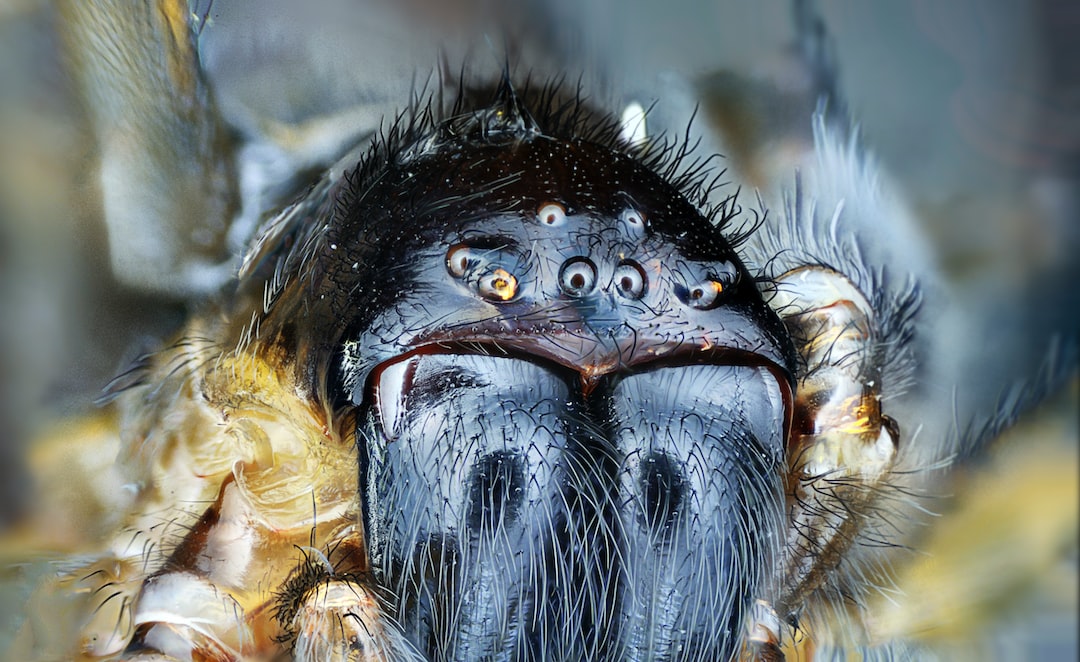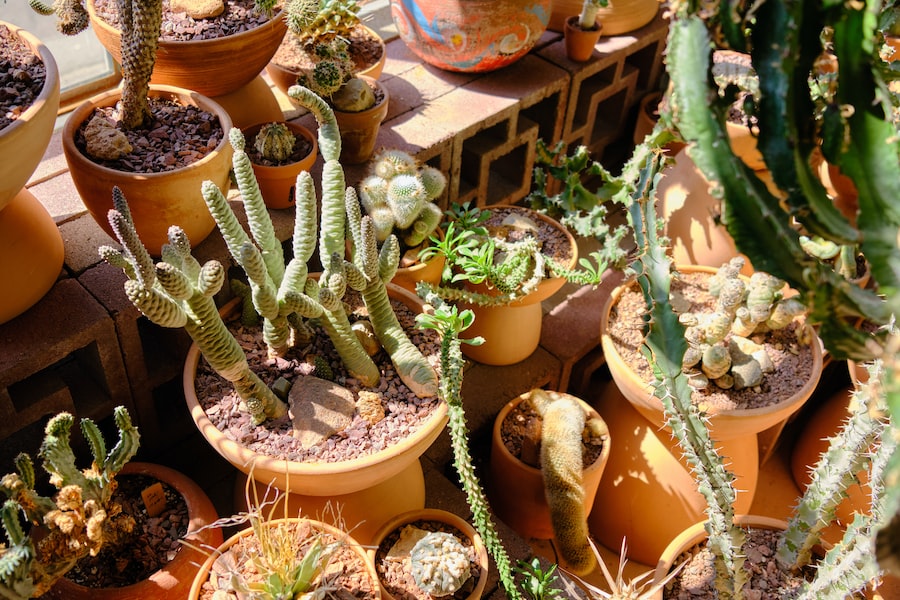Unleashing the Secret: Do Spider Plants Thrive in Root-Bound Conditions?

Spider plants, also known as Chlorophytum comosum, are popular houseplants known for their long, arching leaves and ability to thrive in a variety of conditions. They are native to tropical and southern Africa and have become a staple in many households due to their low maintenance requirements and air-purifying qualities. Spider plants are known for their rapid growth and ability to produce offshoots or “spiderettes” that can be easily propagated to create new plants.
However, despite their resilience, spider plants can become root-bound if not properly cared for. Root-bound conditions occur when the roots of a plant outgrow the pot they are in, causing them to become tangled and compacted. This can lead to a variety of negative effects on the plant’s growth and overall health.
Key Takeaways
- Spider plants are easy to grow and have unique growth patterns.
- Root-bound conditions occur when a plant’s roots outgrow its pot, leading to stunted growth and other issues.
- Factors like pot size, soil quality, and watering habits can affect spider plant growth.
- Signs of root-bound spider plants include yellowing leaves, stunted growth, and roots growing out of the pot’s drainage holes.
- Keeping spider plants root-bound can lead to more frequent watering and fertilizing, but also risks damaging the plant’s health.
Understanding Root-Bound Conditions in Plants
Root-bound conditions occur when a plant’s roots outgrow the pot they are in and become tangled and compacted. This can happen when a plant is left in the same pot for too long without being repotted or when it is planted in a pot that is too small for its root system. As the roots continue to grow, they become constricted within the pot, leading to a variety of negative effects on the plant’s growth and health.
One of the main negative effects of root-bound conditions is restricted nutrient uptake. When the roots are tightly packed together, they have limited access to water and nutrients in the soil. This can result in stunted growth, yellowing leaves, and overall poor plant health. Additionally, root-bound conditions can lead to decreased oxygen flow to the roots, which can further hinder nutrient uptake and contribute to root rot.
Factors That Affect Spider Plant Growth
Several environmental factors can affect spider plant growth and contribute to root-bound conditions. One of the most important factors is light. Spider plants thrive in bright, indirect light and can tolerate some direct sunlight. However, if they are placed in low light conditions, their growth may become stunted, and they may be more prone to root-bound conditions.
Temperature and humidity are also important factors to consider. Spider plants prefer temperatures between 60-75°F (15-24°C) and moderate humidity levels. If the temperature is too high or too low, or if the humidity is too low, the plant may not grow as well and may be more susceptible to root-bound conditions.
Another factor that can contribute to root-bound conditions is overwatering. Spider plants prefer to dry out between waterings and do not tolerate soggy soil. Overwatering can lead to root rot and hinder the plant’s ability to take up nutrients, which can contribute to root-bound conditions.
Signs of Root-Bound Spider Plants
| Signs of Root-Bound Spider Plants |
|---|
| Yellowing leaves |
| Stunted growth |
| Roots growing out of drainage holes |
| Dry soil, even after watering |
| Tangled roots visible at the surface of the soil |
There are several physical signs that indicate a spider plant is root-bound. One of the most obvious signs is stunted growth. If a spider plant is not growing as quickly as it used to or if its leaves are smaller than usual, it may be root-bound. Additionally, if the leaves start turning yellow or brown, this can also be a sign of root-bound conditions.
To check for root-bound conditions, gently remove the plant from its pot and examine the roots. If the roots are tightly packed together and circling around the edges of the pot, this is a clear indication that the plant is root-bound. The roots may also appear brown or mushy if they have been sitting in wet soil for too long.
Benefits and Risks of Keeping Spider Plants Root-Bound
While there are some potential benefits to keeping spider plants root-bound, such as reduced watering needs and smaller plant size, there are also several risks associated with this condition. One of the main risks is decreased plant health and growth. When a plant becomes root-bound, its roots are constricted and unable to take up water and nutrients effectively. This can lead to stunted growth, yellowing leaves, and overall poor plant health.
Another risk of keeping spider plants root-bound is the potential for root rot. When the roots are tightly packed together, they have limited access to oxygen, which can create a favorable environment for fungal and bacterial growth. This can lead to root rot, which can be difficult to treat and may result in the death of the plant.
Techniques for Repotting Spider Plants

To prevent or alleviate root-bound conditions in spider plants, it is important to repot them regularly. The best time to repot spider plants is in the spring or early summer when they are actively growing. Here are some step-by-step instructions for repotting spider plants:
1. Choose a pot that is one size larger than the current pot. Make sure the new pot has drainage holes to allow excess water to escape.
2. Fill the new pot with a well-draining soil mix. A mix of potting soil, perlite, and peat moss works well for spider plants.
3. Gently remove the spider plant from its current pot, being careful not to damage the roots.
4. Loosen the roots by gently teasing them apart with your fingers or a small tool.
5. Place the plant in the new pot and fill in any gaps with additional soil mix.
6. Water the plant thoroughly after repotting and place it in a location with bright, indirect light.
Choosing the Right Pot Size for Spider Plants
Choosing the right pot size is crucial for preventing root-bound conditions in spider plants. If a pot is too small, the plant’s roots will quickly outgrow it and become tangled and compacted. On the other hand, if a pot is too large, it can hold too much moisture, leading to overwatering and potential root rot.
When choosing a pot size for a spider plant, it is important to consider the plant’s size and growth rate. Spider plants have a tendency to produce offshoots or “spiderettes” that can be propagated to create new plants. If you plan on allowing your spider plant to produce offshoots, it is best to choose a slightly larger pot to accommodate the additional plants.
Soil Mixes for Spider Plants in Root-Bound Conditions
Using the right soil mix is essential for promoting healthy root growth and preventing root-bound conditions in spider plants. A good soil mix for spider plants should have good drainage and aeration to prevent waterlogging and allow the roots to breathe.
A mix of potting soil, perlite, and peat moss works well for spider plants. Potting soil provides nutrients and moisture retention, while perlite helps improve drainage and aeration. Peat moss helps retain moisture while also providing good drainage.
It is important to use high-quality soil mixes to promote plant health. Low-quality soil mixes may contain pests or diseases that can harm the plant. Additionally, using sterile soil mixes can help prevent the spread of fungal or bacterial infections.
Watering and Fertilizing Spider Plants in Root-Bound Conditions
Proper watering and fertilizing practices are crucial for maintaining healthy spider plants, especially in root-bound conditions. Spider plants prefer to dry out between waterings and do not tolerate soggy soil. It is important to water deeply when watering spider plants, allowing the water to soak through the entire root system.
Fertilizing should be done sparingly for spider plants in root-bound conditions. Over-fertilizing can lead to salt buildup in the soil, which can harm the roots and hinder nutrient uptake. It is best to use a balanced, water-soluble fertilizer diluted to half strength every 2-4 weeks during the growing season.
It is important to monitor the moisture levels of the soil and adjust watering accordingly. If the soil feels dry to the touch, it is time to water. However, if the soil feels moist, it is best to wait before watering again to prevent overwatering.
Unleashing the Secret to Thriving Spider Plants in Root-Bound Conditions
In conclusion, spider plants are popular houseplants known for their long, arching leaves and ability to thrive in a variety of conditions. However, they can become root-bound if not properly cared for. Root-bound conditions occur when a plant’s roots outgrow the pot they are in and become tangled and compacted. This can lead to a variety of negative effects on the plant’s growth and overall health.
To prevent or alleviate root-bound conditions in spider plants, it is important to repot them regularly. The best time to repot spider plants is in the spring or early summer when they are actively growing. Choosing the right pot size and using a well-draining soil mix are also crucial for preventing root-bound conditions.
Proper watering and fertilizing practices are essential for maintaining healthy spider plants in root-bound conditions. Spider plants prefer to dry out between waterings and do not tolerate soggy soil. Fertilizing should be done sparingly to prevent salt buildup in the soil.
By following these tips and techniques, you can unleash the secret to thriving spider plants in root-bound conditions and enjoy their beauty and air-purifying qualities for years to come.



